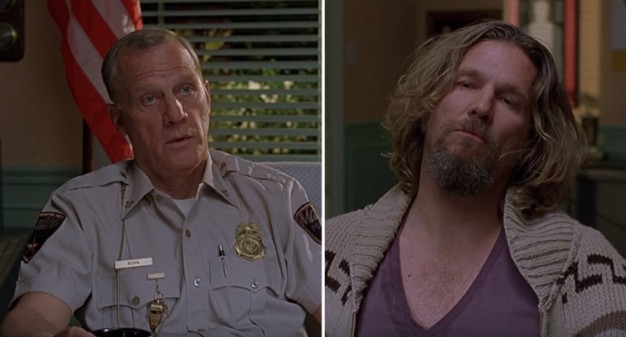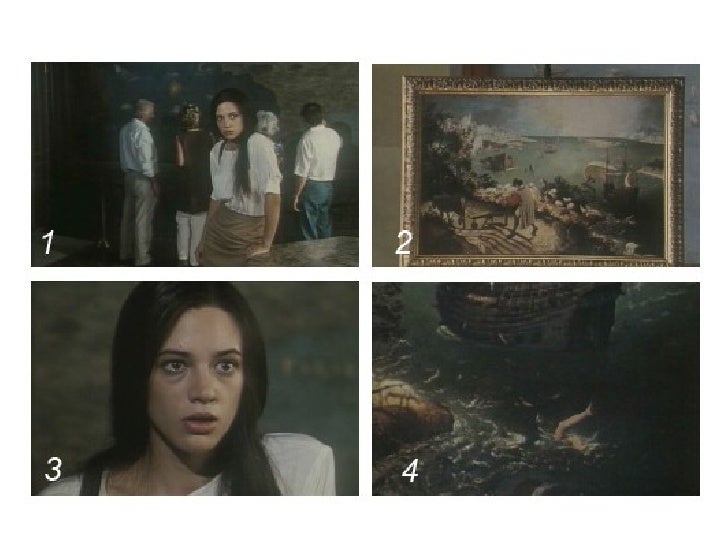William Frieze-Greene had taken up photography and was a camera salesman, inventing some of his own; he attempted to create moving pictures, however his invention, with a turning handle that would capture the images on film, could only run u p to around 5-6 images.
The Lumiere Brothers had created the process of dry plate developing for film images. They were also responsible for starting of taking a motion picture that at the time could only be seen for one person for a view finder, and instead plant the image onto a screen, where it could be seen by many more people at the same time.
The first edited film, where they cut from an exterior shot to an interior shot, or move positions of the camera and show a different shot, was made in 1899 called 'The Kiss In The Tunnel', before this film, creators would film one shot until either the film reel ran out, or if the operator got bored, this film was the first to change area and position, splicing them together, changing film making and creating the process that is now editing.
 The Moviola machine, made by Iwan Serrurier (1924) was able to offer a way to view the film whilst editing, this made the process of cutting, splicing etc. more convenient. You could let the film run it's intentional way, 24 frames per second, or could push pedals to move the film forward or backward by a frame, giving a more specific frame.
The Moviola machine, made by Iwan Serrurier (1924) was able to offer a way to view the film whilst editing, this made the process of cutting, splicing etc. more convenient. You could let the film run it's intentional way, 24 frames per second, or could push pedals to move the film forward or backward by a frame, giving a more specific frame.
In present day, anyone is able to edit their own movies, being able to use free software that comes with their computers such as Movie-Maker and Filmora. Premiere Pro and Final Cut style software's offers a much faster way of editing with streamline access to filters, transitions and many more effects. Gone are the days of hiring a crew or buying product to develop the image and have professionals edit it, we now live in a time where you can sit at home, on your sofa and edit.
Types and purpose of editing film and television
Editing a sequence together, and assembling them in an order that create a chronological structure, when something is edited after another event, it is implied that event did actually happen after the other such as if we saw a man rob a train and shoot someone, we would expect him to do so in that order, this is a style of editing that is known as continuity editing.
If a scene includes a dream sequence or a memory, something that builds away from the line of order, that would be breaking the continuity and making non-continuity editing.
Purpose of editing for film and television
Manipulating a clips time speeds up or slows down the clips. a clip could do this to fix the pace at post, getting a clips point across quicker or it could be used to add or heighten an intentional reaction. A film that uses slow motion to express the reaction to the audience whilst giving them more time to process the meaning behind the edit can be found scattered through Raging Bull, the film also must present a few decades in a couple hours, this means that the film must flash forward through time, only taking the most relevant stages/ points of his life, a show/ film could also use flashbacks, giving details or reminders to previous or unshown parts of the story. A shot reverse shot and eye-line match has the ability and expectation to create space between both shots, giving you the understanding of the distance between the subject and the other object/ person without having to have them in the same shot. Controlling the pace or rhythm of editing, if done well, should seem seamless, invisible editing helps control the flow on the scenes.
Functions of editing for film and television
-Create Narrative
Motivated editing has the ability to further the narrative. As the shot ends and another is presented, it is assumed that the story progresses, motivated editing that moves the story could be something such as a eye-line match and shot reverse shot, where we now know what the character was looking at off screen. 'No Country for Old Men' (2007) is able to created motivated editing, it shows the eye line match of the handle of the door flying off the door, cutting to the characters reaction and then back to the shot of the door, having the character shoot the door closed, editing that is motivated to progress the narrative forward. It also creates a development of drama, introducing the stakes of the situation, a hidden tracking device and then bringing in the antagonist of the film into the scene. This scene in the hotel room withhold information, having you question the well being of the outside characters and whether danger is correct and if our protagonist will make it out alive, the entire hotel section stays in the room, questioning the outer situations. The creators were able to provide information, showing us a blinking tracker, we hear a beeping receiver on the other end of the door, signaling that the person who planted it, the one who wants the money back, is the real character and isn't a fake out moment.
-creating continuity between shots
Following the action is a way for the camera(s) to work around the characters and objects, it normally involves using more than one camera and cutting between different shots and angles. During the early years of film-making, editing wasn't as it has become in the present day, this meant that this opportunity of editing wasn't at the creators disposal; being able to cut between different cameras means that you get the best of what was being filmed, doing it in one means no continuity errors occur in the process, it brings multiple points of view throughout the action. Mainly action films today record an event of action with multiple cameras, having the crew follow the cast instead of the other way around.
Changing location to interior or exterior, normally at the beginning, involves an establishing shot which helps the viewer understand where the scene will be taking place. In order to keep continuity, if one character is going from one place to another, time must change, if the location between are far away, it may change from day to night or a different day. If two people share a house together and one person is shown in the living room and then cuts to the other in the kitchen, it keeps continuity of location keeps within the same house. If a character is leaving, show them in the parking lot or garage, getting into their car and leaving showing progression in the characters location and in the story. The master is able to change location and have us understand the length of travel without having to show us, we can understand the contrast of location from a sparse population to larger civilization. The Master is also able to change the time frame with the field escape scene, it changes from day to night, making the scene destroying the events occurring in real time. You could also change the time frame with something such as a dream sequence, it sends the story into a different place and time, pedaling off from the story being told to deliver a persons new story whilst they are asleep.
-Create audience reaction and engage the viewer.
Building suspense in film and television is one of the best ways in order to grab and engage the audience, building up to their reaction, suspense must keep within a pace, this pace must slowly intriguing the audience, therefore longer shots of substantial elements of the scene must be established and drawn out,; once this is done, introduce the threat of for the protagonist, this will be made up of shorter edits, keeping shots fresh and not expiring the image, using shorter shots means that the audience has no breathing time, it creates a fast pace editing style that keeps the audiences engagement, soon the payoff is brought to the viewer, this offer the audiences reaction and normally stays on the smallest amount of shots, slowing the scene back down in terms of editing. A television show that is able to achieve a suspenseful reaction as well as keeping to the pace that builds this is 'Breaking Bad', during the bar scene in the penultimate episode 'Granite State' this scene builds around the music, introducing a tense engagement, building it up with more instruments and a faster pace and then onto the payoff.
-Create meaning
Applications of editing techniques
 Establishing shots are a way to introduce the audience into a new setting. It progresses the narrative forward and is a helpful message to the viewer that the story has changed location. It is usually used for the beginning of a scene and can be done with only one shot.
Establishing shots are a way to introduce the audience into a new setting. It progresses the narrative forward and is a helpful message to the viewer that the story has changed location. It is usually used for the beginning of a scene and can be done with only one shot. Cut-away's are a good way of avoiding jump cuts and is a way to introduce or remind the existence of outside, unimportant elements of the scene. A cut away starts with the focus/ subject, cuts away to something else such as a television or flower, and then cuts back to the original focus, keeping continuity in the scene.
Cut-away's are a good way of avoiding jump cuts and is a way to introduce or remind the existence of outside, unimportant elements of the scene. A cut away starts with the focus/ subject, cuts away to something else such as a television or flower, and then cuts back to the original focus, keeping continuity in the scene. The 30- Degree rule is a way to avoid making your different shots look like jump cuts, it's a rule that builds upon the premise that if you cut between a shot or place different amounts of cameras, it's to ensure that when one shot is established, to not directly cut to a different shot within 30 degrees of the original shot.
The 30- Degree rule is a way to avoid making your different shots look like jump cuts, it's a rule that builds upon the premise that if you cut between a shot or place different amounts of cameras, it's to ensure that when one shot is established, to not directly cut to a different shot within 30 degrees of the original shot.Jump cutting are taking two shots in a row and having very small distinctions between both of them. It makes it look like a passage of time and makes the product look amateur.
 Shot/reverse shot are normally used during conversation and consists of showing one subject and cutting to another flipped with where they are looking and the camera placement.
Shot/reverse shot are normally used during conversation and consists of showing one subject and cutting to another flipped with where they are looking and the camera placement.
The 180 degree rule is the invisible line that builds around the premise that you when you are placing the camera, to not cut to a point of the room the other way, imagine a circle around the subject, you shouldn't take the first shot that begins at one point of the circle and then the second shot that is on the opposite site, 180 degrees away from it. This rule tends to be broken to give a dizzy effect on the audience as the positions of the characters or objects are completely flipped.
 Eye-line match is an editing rule that if you show a character looking at something off of the screen, what the audience cannot see, they will immediately become interested at what they are looking at, bringing the characters and viewers focus towards that ambiguous subject, then you must establish what that focus was, making the next cut after that the thing the character was previously focused on. It has been used so much, the audience tends to expect the next shot to be what the characters are looking at whether we know this rule or not.
Eye-line match is an editing rule that if you show a character looking at something off of the screen, what the audience cannot see, they will immediately become interested at what they are looking at, bringing the characters and viewers focus towards that ambiguous subject, then you must establish what that focus was, making the next cut after that the thing the character was previously focused on. It has been used so much, the audience tends to expect the next shot to be what the characters are looking at whether we know this rule or not.
Match cuts is taking something that is shown in a specific area of the frame and having a look alike or exact subject ripped from that area and into the next, it could show the character changing location. In the first shot, it has us focus on a specific area of the screen and having it cut to the next shot changing the it slightly but using something that looks like it or exactly that.
Seamless editing occurs when the editors have been able to edit the scene together in a pace that flows through each shot without lingering on any shot too long or cutting short at any point, you can take the a shot, go back to it and everything stays the same in the background, the person is wearing the same shirt, the cup has the same amount of drink in it etc. and nothing is out of the ordinary and not distracting. When hard work occurs in editing, it should go unnoticed.
Montage's are a way to show large progression in the narrative whilst taking as little amount of time as possible.
Juxtaposition is taking two subjects that contrast largely and have them connect either due to a theme, similarity or large difference such as black and white are complete difference but are both colors.
Freeze-framing is choosing a specific frame of the film and staying on it for more that 1/24th the amount of time/ the actual time it should be shown. This became a popular editing technique during the 80's where they would end their films on a specific frame. This trick stops the film entirely, keeping the object/ character in one position and freezing time, bringing the audience captivation away from the film intentionally.
Slow motion is an editing technique of taking a shot or combination of shots and slowing the time down, heightening the overall run time, it can be used to keep focus on an intentional point of the story however can bring the viewer away from the captivation of the film, making it a distraction.
 Split screen is used to cut the shots in half and planting another next to/ above it. This technique removes the need to cut to causes and reactions and instead contains both within the frame. It takes up less time however removes the illusion of film. A film such as requiem for a dream uses it at the beginning to express that they both have equal ground and foreshadows that both, emotionally, will end up in the same place by the end of the film.
Split screen is used to cut the shots in half and planting another next to/ above it. This technique removes the need to cut to causes and reactions and instead contains both within the frame. It takes up less time however removes the illusion of film. A film such as requiem for a dream uses it at the beginning to express that they both have equal ground and foreshadows that both, emotionally, will end up in the same place by the end of the film.Wipes are a transition best used to change locations instead of between characters and objects in a scene. It is a way to end the scene and cut to the next that has large distance between the last. It became a popular transition in the franchise Star Wars.
Dissolves and fades are a slower transition to another shot. It is a way to linger on the shot whilst introducing another. It could be used to introduce or end the film.